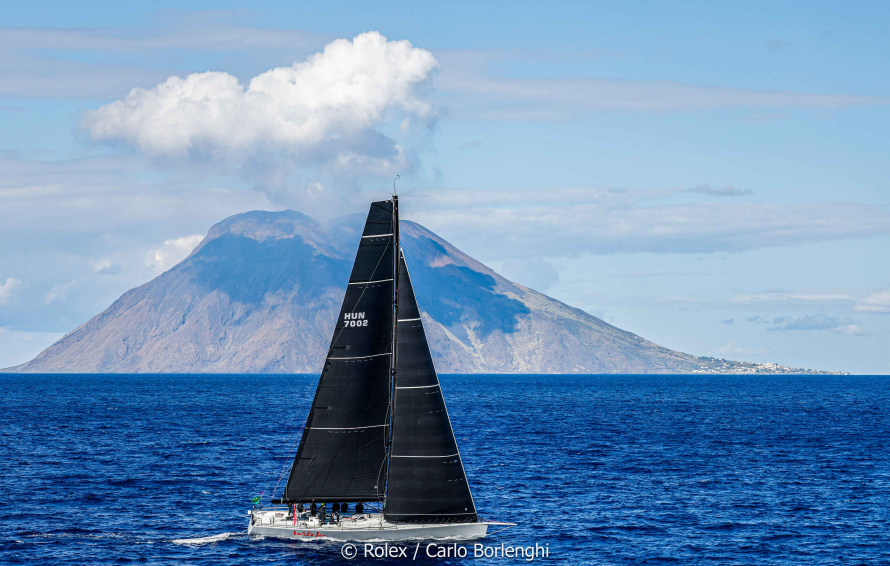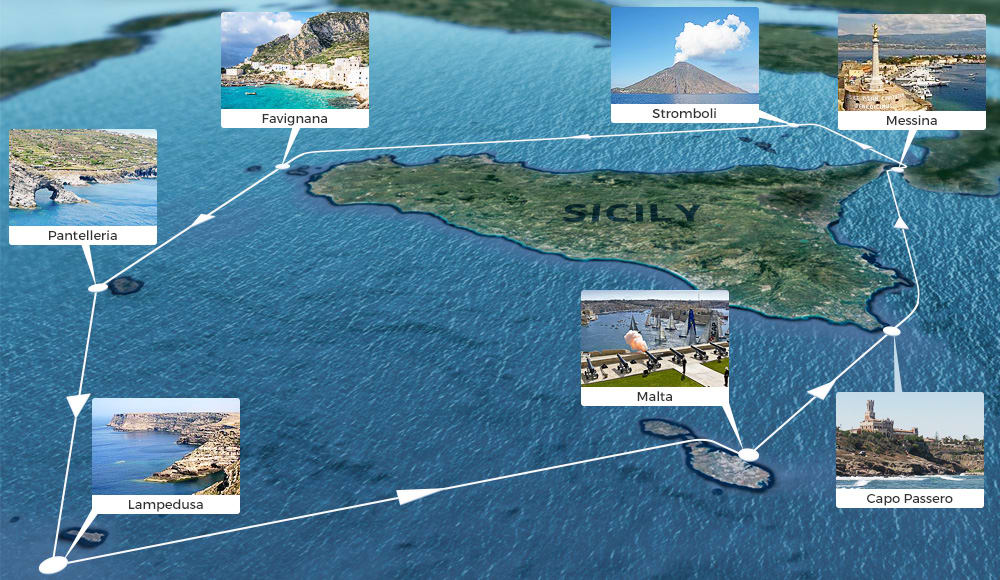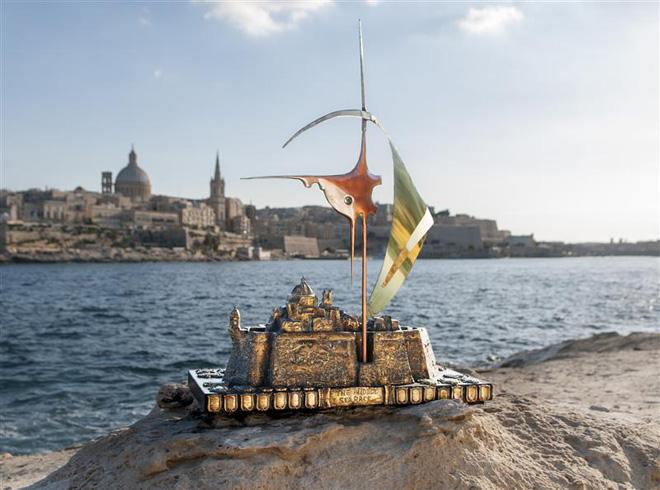Local Knowledge: Rolex Middle Sea Race 2021

The 42nd Rolex Middle Sea Race is scheduled to start on 23rd October 2021, with a fleet of 120 yachts (and counting) lining up at the start in Grand Harbour Marina in Malta. This iconic yacht race is the final major offshore in the 2021 calendar for Northern Hemisphere sailors and is considered to be the Mediterranean’s premier 600-mile offshore classic.
 Image credit: Rolex/Carlo Borlenghi
Image credit: Rolex/Carlo Borlenghi
An international fleet of yachts descends on Malta
This year sailors from 17 nations have entered, with yachts ranging from the mighty 42.56m (140ft) ClubSwan 125 Skorpios, down to smaller entries such as the 9.9m (33ft) J99 Calypso Odysessy. Calypso Odysessy is a new entry from RLR Yachting’s own Thomas and Sebastian Ripard, together with their crew Daniel Calascione, Sam Pizzuto, Kris Borg Nicholas and Lauren Mead.

Image credit: TeamO Marine/Alex Turnbull Photography
How long does it take to do the Rolex Middle Sea Race?
The Middle Sea Race is classified as a Category 2 race under the World Sailing rating system. The 606nm course can take anywhere from a few days to a week to complete, depending on the size of the yacht, although the outright course record stands at 47 hours, 55 minutes and 3 seconds – set in 2007 by George David’s Rambler. The overall winners of the past two editions of the race have been the legendary Maltese family sailing team of Aaron, Maya and Christoph Podesta on Elusive 2 and the boat is returning in 2021 to defend their title! The race had never been won twice consecutively before Elusive2’s 2020 victory. Can the Podesta family team make it a third year running this year?

Image credit: Rolex/Kurt Arrigo
The Middle Sea Race course:
The course starts in Malta, in Valetta, where yachts race out of the Grand Harbour to race in an anti-clockwise loop around Sicily, Pantelleria and Lampedusa before sailing back to the finish line off Tigne Point in Malta.

On leaving Malta, the fleet heads North to Capo Passero, the Eastern seaboard of Sicily and on towards the Strait of Messina. The active volcano, Mount Etna, is often visible on the port side. The Strait is one of the most technically demanding parts of the course, with crews keen to encounter both favourable current and wind to enable a straight-forward passage.
From Messina, the yachts head North to the second active volcano on the course, Stromboli, one of the Aeolian Islands, all of which must be left to port. At the islet of Strombolicchio, the fleet turns West along the Northern coast of Sicily towards the Egadi Islands.
Leaving the Egadi Islands (except Marettimo) to port, crews head South towards the island of Lampedusa leaving Pantelleria to port. At Lampedusa, the course heads North-east to the South Comino Channel (between Comino and Malta) and the final leg to the finish line at the entrance to Marsamxett Harbour.
Key points in the Rolex Middle Sea Race (Race course leg by leg):
- Valetta (Malta)-Capo Passero (Sicily) 55nm
- Capo Passero-Messina Strait (exit) 98nm
- Messina Strait-Strombolicchio 35nm
- Strombolicchio-Favignana (Egadi Islands)150nm
- Favignana-Pantelleria 74nm
- Pantelleria-Lampedusa 90nm
- Lampedusa-Comino 94nm
- Comino-Marsamxett Harbour 10nm.
How to win the Middle Sea Race

The Rolex Middle Sea Race trophy overlooking Marsamxett Harbour, home of the Royal Malta Yacht Club. Image credit: Edward Lowell
For Tom Ripard, this will be his 10th Middle Sea Race, and his third that he has completed with his brother Sebastian. Between the brothers they have seen a huge range of conditions and so we asked for their insider knowledge of race course and any tips that sailors coming to Malta for the first time should know.
“Preparation is key as the Middle Sea Race can throw any number of conditions at you” says Tom. “Often the first 24 hours of the race can be reasonably light as the fleet heads over to Sicily and up the east coast…Although equally there have been plenty of races which have seen the fleet racing out of Grand Harbour straight in to 25knots and a battle up the coast of Sicily!
A tip for the crew is to get in to your watch routine as quickly as possible after the start and to grab as much sleep early on as you can as later in the race it’s easy to get completely exhausted.
For navigators: in this first leg of the race look out around the Catania headland for a transition phase as there is often a land breeze that can come in to play as the first dusk draws in. A shut down as you get in to the Messina Straits is common, and conditions along the north coast of Sicily can also often be fickle and light.”
It is here that competitors strike off towards Stromboli and many sailors say that this part of the race is the most beautiful sailing they have ever done thanks in part to the sight of the volcano, often at dawn on day 2 of the race by this point for smaller boats.

Image credit: Rolex Middle Sea Race
We recommend Peter Gustaffson’s report on the 2019 race on his boat Blur for a coverage of this part of the course.
Once past Stromboli, Tom continues: “As you reach the north-west corner of Sicily, around Cabo San Vito, you can find that there is a real divide between boats that decide to hug the coast or those that head offshore. In 2019 when racing with Thomas Kneen’s JPK1180 Sunrise, we saw the fleet turned on it’s head here, with those that went further offshore staying in better pressure, and those that were inshore stationary, helplessly watching those just a few hundred meters away glide away in wind that they just could not reach.”
After turning the corner the fleet heads towards Pantelleria. There is approximately 275-300nms of the Middle Sea Race left at this point, but this second half of the race can often see conditions build quickly. After turning past Favignana in the 2019 edition of the race Blur’s team reported “After we passed Pantalleria the wind increased to 20-25 knots… we managed to push the boat hard, but the waves were very steep and we ended up either flying over and slamming hard into the next one… or just going through them. everyone was wet and got soaked every time we hit a big wave and in general it was pretty miserable. We talked about how much better life must have been in the 45-footers, but apparently they were miserable as well… And a 60’ ORMA trimaran was abandoned after nearly sinking, so I guess it was the same for everyone!”

Image credit: Rolex/Kurt Arrigo
From Lampedusa it is a straight 90nm back to the finish line in Malta. Conditions here can vary widely but Tom mentions it is worth keeping an eye on local current here as this can often be stronger than people expect and should be taken in to consideration when making tactical decisions. Peter’s very good PDF presentation run through of the 2019 race analysis also emphasises the need to constantly stay on top of fleet positioning, both in the opening phases and the later stages of the race as there are many opportunities for a reshuffle of the leader board for boats that are alert to opportunities.
Good luck to all of the sailors competing in the race!
RLR Yachting will be open from 0830am until late every day from now until the race start. Please visit us for any final preparation or kit advice that you need for your boat. We have good stock levels of Musto sailing wet weather gear, SLAM and more sailing clothing, including Spinlock lifejackets, Kannad AIS units and other sailing safety equipment. Also in stock: Marlow rope and rigging (and custom rigging services will be available in store until race start), Harken blocks, Ubi Maior deck hardware, Spinlock clutch range (including the new Spinlock XTX SoftGrip Clutch) and much much more.
Follow the Rolex Middle Sea Race on Facebook here, or catch a live stream of the Middle Sea Race Start on 23rd October online here. You can also track the sailors during the race via the Yellow Brick tracking app or on the Middle Sea Race website.
